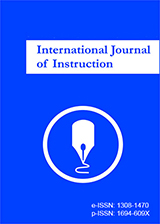Lecturers' Perspectives on Undergraduate Students' Innovative Thinking Skills and Creative Problem-Solving Skills: A Comparative Needs Analysis
Keywords:
creative problem-solving, Innovative thinking skills, necessary needs, PNImodified, ThailandAbstract
This study aimed to identify the gap between undergraduate students’ actual and expected levels of innovative thinking skills (ITS) and creative problem-solving skills (CPSS), as perceived by faculty lecturers. Specifically, it examined lecturers’ perspectives to prioritize areas for enhancing students' ITS and CPSS within computer science, information technology, and digital business fields. A sample of 30 lecturers at Southeast Bangkok University was selected through simple random sampling. Data were collected using two validated, structured questionnaires, achieving reliability coefficients of 0.93 (ITS) and 0.95 (CPSS) for expected conditions and 0.95 and 0.98 for actual conditions, respectively. Statistical analysis included calculating means, standard deviations (SD), and the Priority Needs Index (PNImodified), with paired t-tests applied to determine significant gaps. Findings revealed that while lecturers expected students' ITS to be high, the actual performance was moderate, prioritizing knowledge of innovative techniques for enhancement. CPSS was also observed as a development priority, particularly in creative problem-solving processes and complex problemsolving, suggesting targeted improvements to meet lecturer expectations.
Downloads
Downloads
Published
How to Cite
Issue
Section
License
Copyright (c) 2025 International Journal of Instruction

This work is licensed under a Creative Commons Attribution-NonCommercial-NoDerivatives 4.0 International License.







